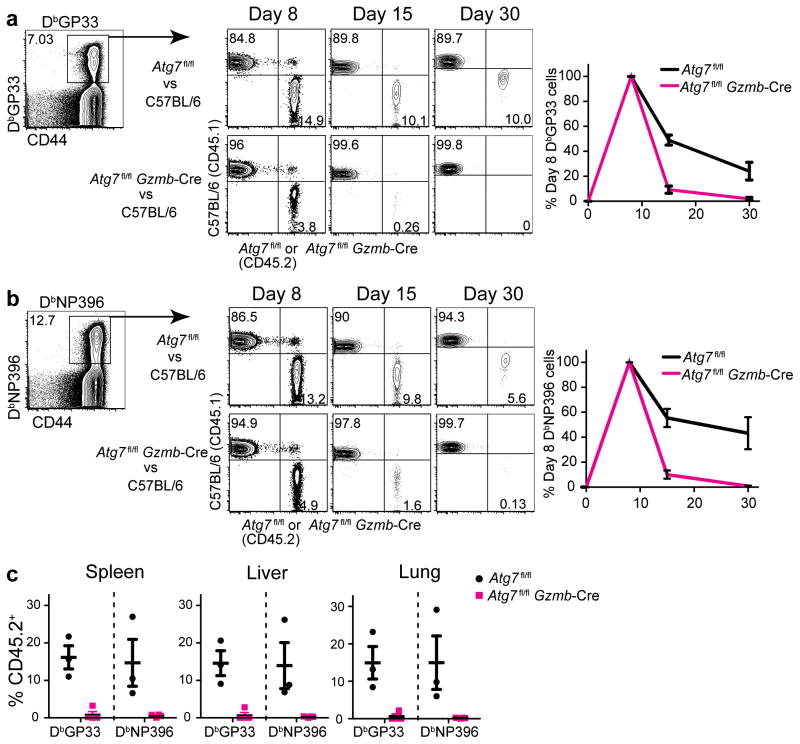FIGURE 6.
Antigen-specific CD8 T cells lacking the Atg7 gene exhibit cell-intrinsic defects in developing into long-term memory cells in bone marrow chimeric mice. Atg7fl/fl plus C57BL/6 (CD45.2/CD45.1) control and Atg7fl/flGzmb-Cre plus C57BL/6 (CD45.2/CD45.1) experimental mixed bone marrow chimera mice were generated. CD8 T cell response was evaluated following the LCMV Armstrong infection according to the scheme in Supplementary Fig. 5a. (a) and (b) Flow cytometric analysis of DbGP33- and DbNP396-specific T cells on day 8, 15 and 30 p.i. Gated on tetramer-positive CD8 T cells as indicated. Number on each quadrant represents the percentage of tetramer-positive cells that are either CD45.1+ or CD45.2+ as indicated on the axis. Average percentages of DbGP33- and DbNP396-specific T cells from day 8 to day 30 in the peripheral blood of both groups of chimeric mice are plotted to the right of the flow plots in (a) and (b). The black line represents tetramer-positive cell of Atg7fl/fl origin and the red line of Atg7fl/flGzmb-Cre origin. The number of tetramer-positive cells on day 8 p.i. from each mouse is normalized to 100%. (c) Percent of CD45.2+ antigen-specific cells in tissues on day 30 post-infection. The error bars in (a)–(c) indicate SEM. n=3–4 mice in each group. Data in (a)–(c) are representative of two independent experiments.

